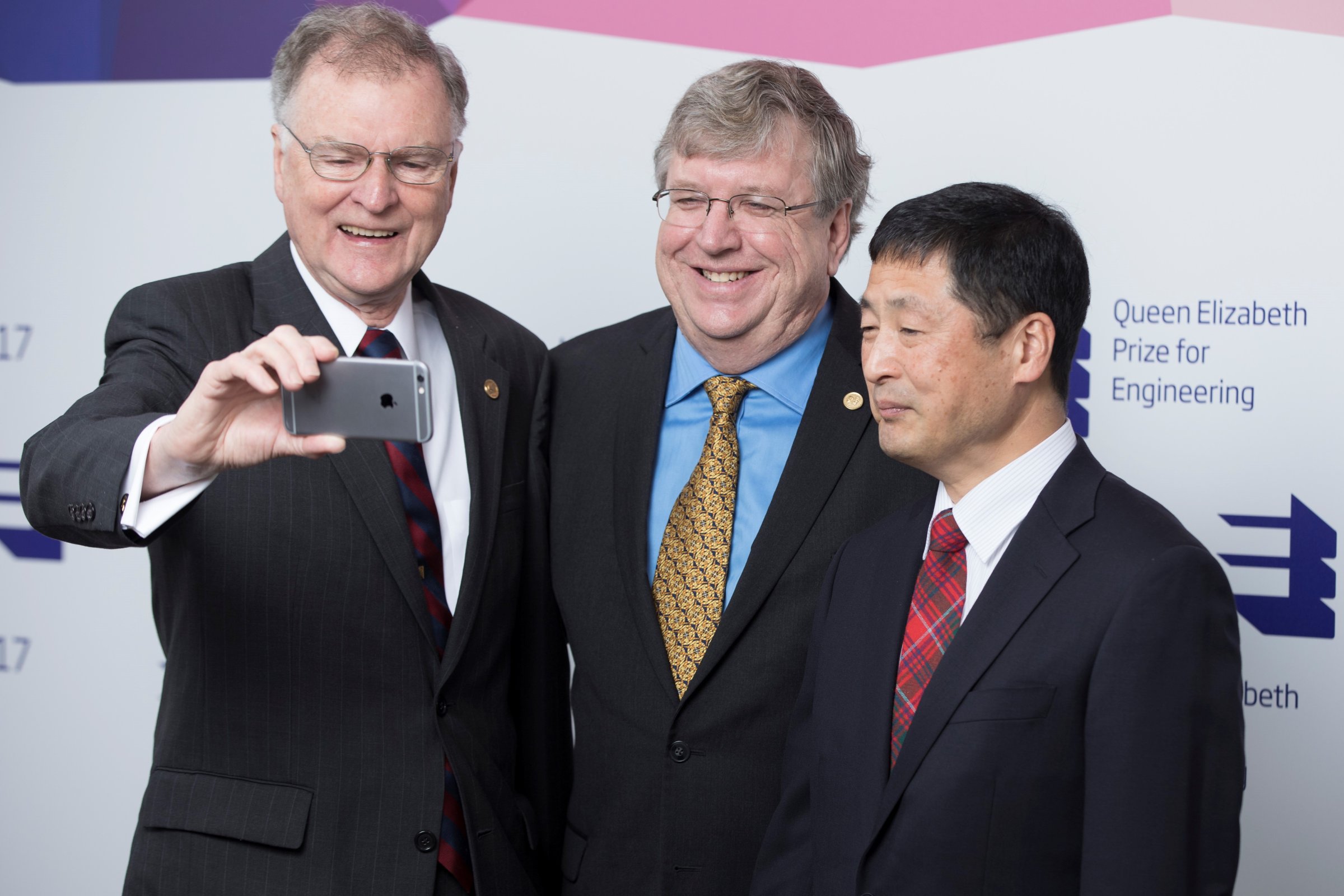
Four engineers responsible for the creation of digital imaging sensors have been honored with the prestigious Queen Elizabeth Prize, a British award that celebrates world-changing innovations in engineering that have been of global benefit to humanity.
Engineers Eric Fossum (from the U.S.), George Smith (U.S.), Nobukazu Teranishi (Japan) and Michael Tompsett (U.K.) were today announced as prize winners for revolutionizing the way we capture and analyse visual information. Between them, they created three digital imaging breakthroughs that span three decades: the charge coupled device (CCD), the pinned photodiode (PPD) and the complementary metal oxide semiconductor (CMOS) image sensor.
Together, these innovations have effectively allowed digital cameras to shrink without sacrificing quality. It’s the technology that gives doctors a high-definition view inside your body; permits a NASA probe to send back detailed pictures from Mars; and lets cellphones capture a selfie.
Tompsett, who developed the CCD — the image sensor found inside early digital cameras that converts individual particles of light, or photons, into an electrical signal which is then converted into a digital form and stored as digital data — told TIME that he was in “total shock and awe” when he found out he was a winner of the prize.
When he first worked on the development in the early ’70s, Tompsett had no idea that image sensors would become so ubiquitous. “I was familiar with the need to make the cameras smaller,” he said. “But at that time, did I guess that everyone would one day carry around a sensor in their pockets? No. What’s happened over the last 40 or 50 years is the technology has continued to improve – image sensors are now all over the world and are being manufactured by the billions.”
In 1992, Fossum developed the CMOS image sensor when working at the NASA Jet Propulsion Laboratory (JPL). With a transistor for each pixel (rather than one transistor in the corner of the sensor, which is how the CCD works), CMOS sensors enable cameras to be made smaller, cheaper and with better battery life. “We were trying to improve the performance of cameras in space as well as make them more resistance to radiation,” he told TIME.
“I knew [the CMOS image sensor] would be useful for all kinds of things, but everyday I am still astonished by how widespread the technology is and in how many different places it’s being used – from selfies taken by smartphones to pill cameras that can look inside your small intestine,” Fossum added. “If I’d known this before I started the company, I probably would have structured things differently – I could have made a lot more money!”
Tompsett and Fossum hope that learning about the prize and their achievements will encourage future STEM students to work hard at their studies and pursue careers as engineers.
“In school, children are often taught to get the right answer – but in engineering and invention you don’t often get the right answer at the right time,” Fossum said. “It took us several years to get CMOS right and that was just in the research lab – it took even longer to get it right in a commercial and manufacturing sense. You have to repeat and try again. It’s really important for students and teachers to learn and understand that lesson.”
Previous winners of the Queen Elizabeth Prize include Robert Kahn, Vinton Cerf and Louis Pouzin, who made seminal contributions to the architecture of the Internet, and chemical engineer Dr Robert Langer for his revolutionary advances and leadership in engineering at the interface with chemistry and medicine.
More Must-Reads from TIME
- Breaking Down the 2024 Election Calendar
- How Nayib Bukele’s ‘Iron Fist’ Has Transformed El Salvador
- What if Ultra-Processed Foods Aren’t as Bad as You Think?
- How Ukraine Beat Russia in the Battle of the Black Sea
- Long COVID Looks Different in Kids
- How Project 2025 Would Jeopardize Americans’ Health
- What a $129 Frying Pan Says About America’s Eating Habits
- The 32 Most Anticipated Books of Fall 2024
Write to Kate Samuelson at kate.samuelson@time.com